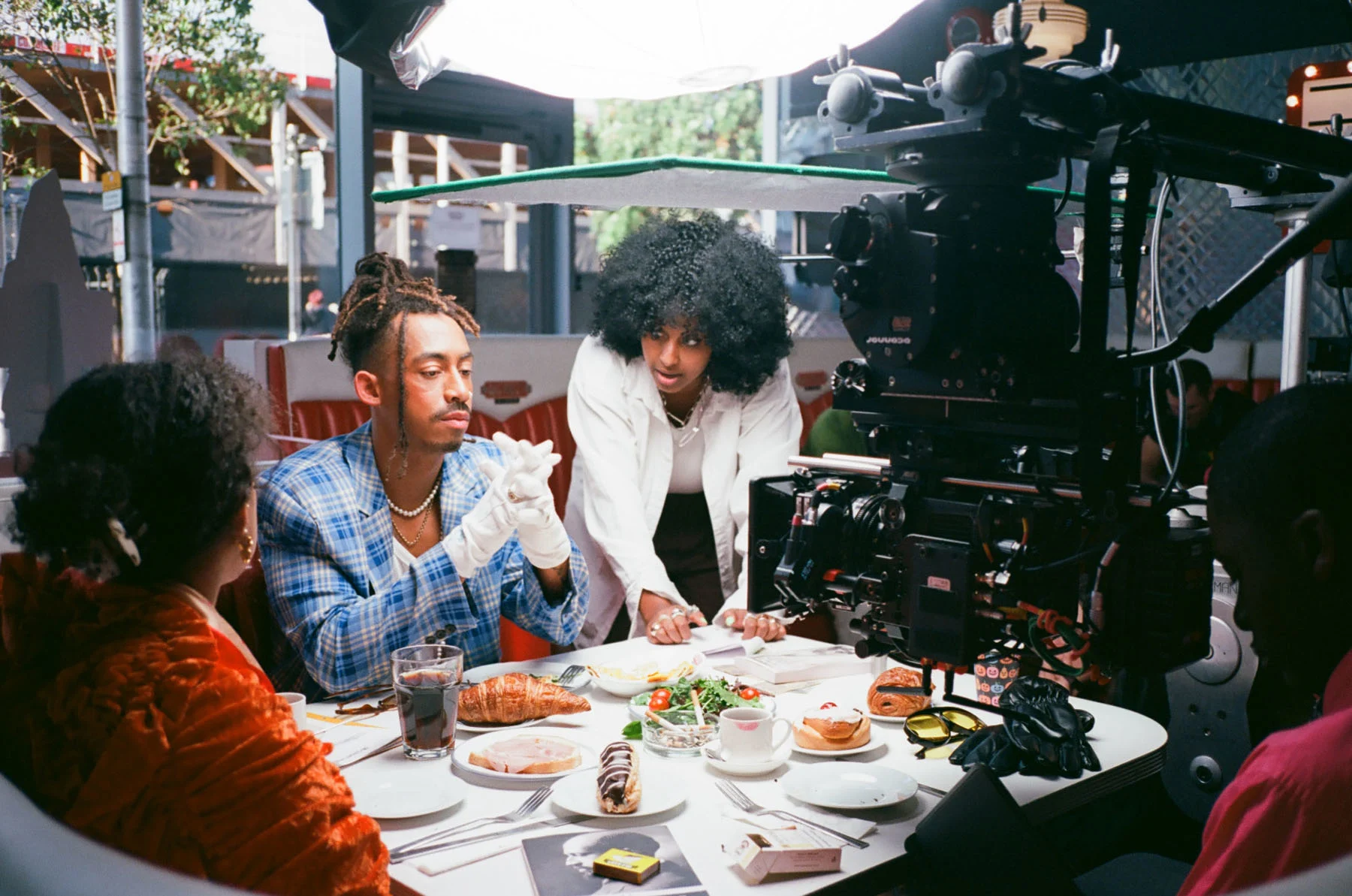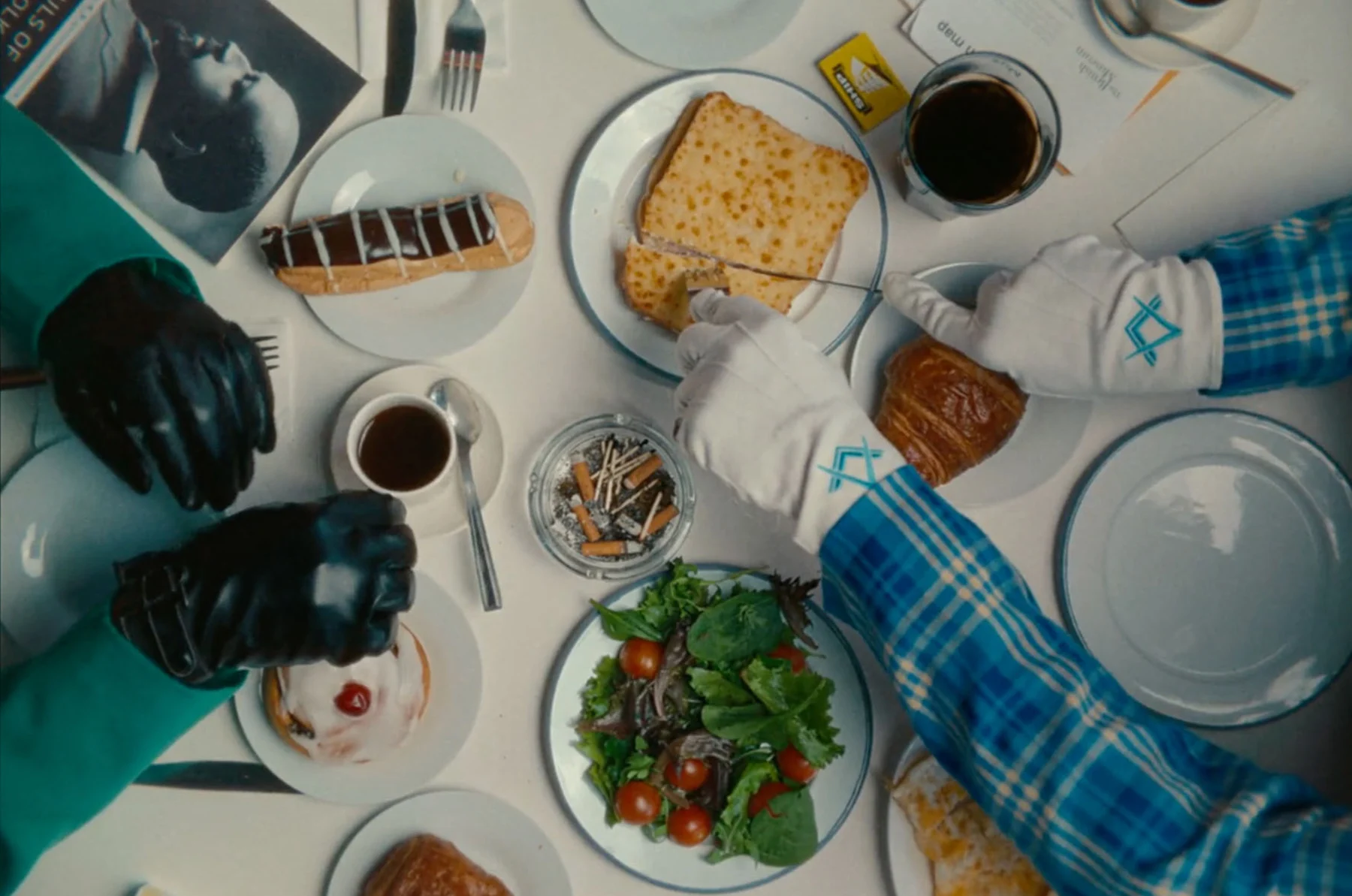
Would we feel differently about our favorite films if small details were changed in the casting, writing or direction? This was the question on director Ruth Hunduma’s mind when she began writing her own take on Jean-Luc Godard’s New Wave classic “Bande à part” (“Band of Outsiders”). Replacing the original’s white French leads with Black Londoners, she wondered, would their criminal motive “be perceived as more or less suspect than that of their white counterparts?” Writer Allyssia Alleyne hears how this stylish film—Hunduma’s directorial debut—was filmed in just a day. Planning a heist has never looked so good.
Before 2021, Ruth Hunduma had never seen “Bande à part” (“Band of Outsiders”). But when she finally did, the effect was instant and profound; she immediately started to write her own take on Jean-Luc Godard’s New Wave classic, replacing the original’s white French leads with Black Londoners, and the domestic robbery at its center with a politically tinted museum heist. “It was literally a burst of inspiration right after I saw it,” she recalls from her home in northwest London. “I’d always wanted to play with the notion of reappropriating or reimagining a classic film with Black characters, and seeing what would unfold—how do the destinies of the characters change, and how does the motive as a whole change?”
The script also raises new questions for the viewer. Will her characters’ motive, seemingly rooted in more than just personal gain, be perceived as more or less suspect than that of their white counterparts? Will they be given the same empathy, or extended the benefit of the doubt? “I see it as using the butterfly effect with identity within the fabric of cinema. This isn’t necessarily me saying having black characters as opposed to white characters is for x effect, but rather asking what shifts in our consumption of the work based on a simple change in detail,” Hunduma says.
Now, that initial exercise has been released to the world as “A Band Apart.” Stylish, stylized, and seven minutes long, it follows a conversation between charismatic Arthur (Jordan Stephens), mild-mannered Franz (Terique Jarrett) and glamorous Odile (Lou Llobell) as they prepare for the job, dressed to kill in a retro diner. It’s an homage to Godard, but not only Godard, with splashes of Quentin Tarantino, Wes Anderson and Alessandro Michele-era Gucci. “As a director, this was my opportunity to create a really potent visual stamp. The film is as extravagant as the script is, you know—I tried to match the style with the substance,” she says.


“A Band Apart” is Hunduma’s directorial debut. Funded by a grant from the Roundhouse Film Fund for early-career filmmakers, it was also a crash course in filmmaking for someone who, prior to this project, had never stepped behind the camera. Born in Perth, in West Australia, Hunduma moved to London in 2017, and worked behind the scenes in TV development. When she first watched “Bande à part,” she was still finding her footing as a writer.
“In the lead-up, I really had no idea what I was doing,” she says. She didn’t know, for example, how to put together a shot list, nor did she expect that 30% of those shots would have to be cut due to time constraints. (The whole shoot was a day; rehearsal, mere hours.) She didn’t know who would be needed to do what on a crew, or have a Rolodex of trusted contacts to call on. But what she did know was that, to make this work, she would need to surround herself with people who understood the vision and could play their part well.
“I'm never afraid to say that I don’t know what I’m talking about; I think that’s one of my strengths. So when it comes to directing, I surround myself with an amazing team,” she says. “I’m so comfortable with my ignorance, at this stage of my career; I’m aware that I haven’t been doing this for 10 years, and I use this as an opportunity to just be a sponge and soak up information from everybody around me. For me, this is just an opportunity to learn as much as I can. “With film, the only way you can really learn is by throwing yourself in at the deep end. I just tend to jump in the deep end all the time.”
The professionalism and experience of her collaborators meant Hunduma was picking up not only technical skills, but also learning how to manage the emotional element of filmmaking too. When things didn’t go to plan on set or during the edit (like when a steady downward pan looked less slick than anticipated, or the 4:3 aspect ratio cut a beloved detail out of every shot), she leaned on her cast and crew’s level-headedness and flexibility to inform her own response.
You might think that you have to plan every single shot out, but the freedom you have on set can be quite a superpower.
“I’m a little bit of a perfectionist when it comes to these things, and I definitely went through my own internal struggles of accepting the process and not trying to have control over everything. I didn’t know that it’s okay to lose half of your sharpness, it’s okay to make changes, and it’s okay that something’s not going to look the way you want it to look,” Hunduma says. She recalls watching admiringly as the film’s director of photography, Henry Gill, moved his camera around the set, playing with different set-ups until he found what felt right.
“Going to it as a new filmmaker, you think that you have to plan every single shot out and every single sequence, and know exactly what you’re doing. But the reality is the freedom that you have on set actually can be quite a superpower.”

